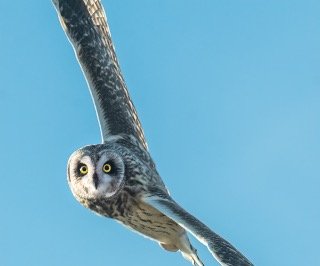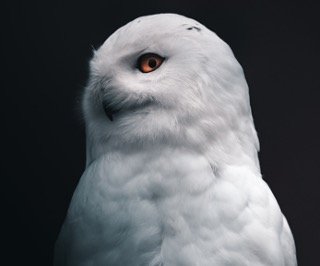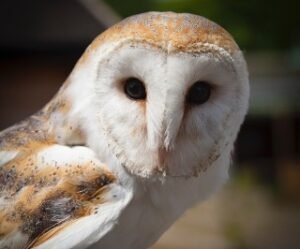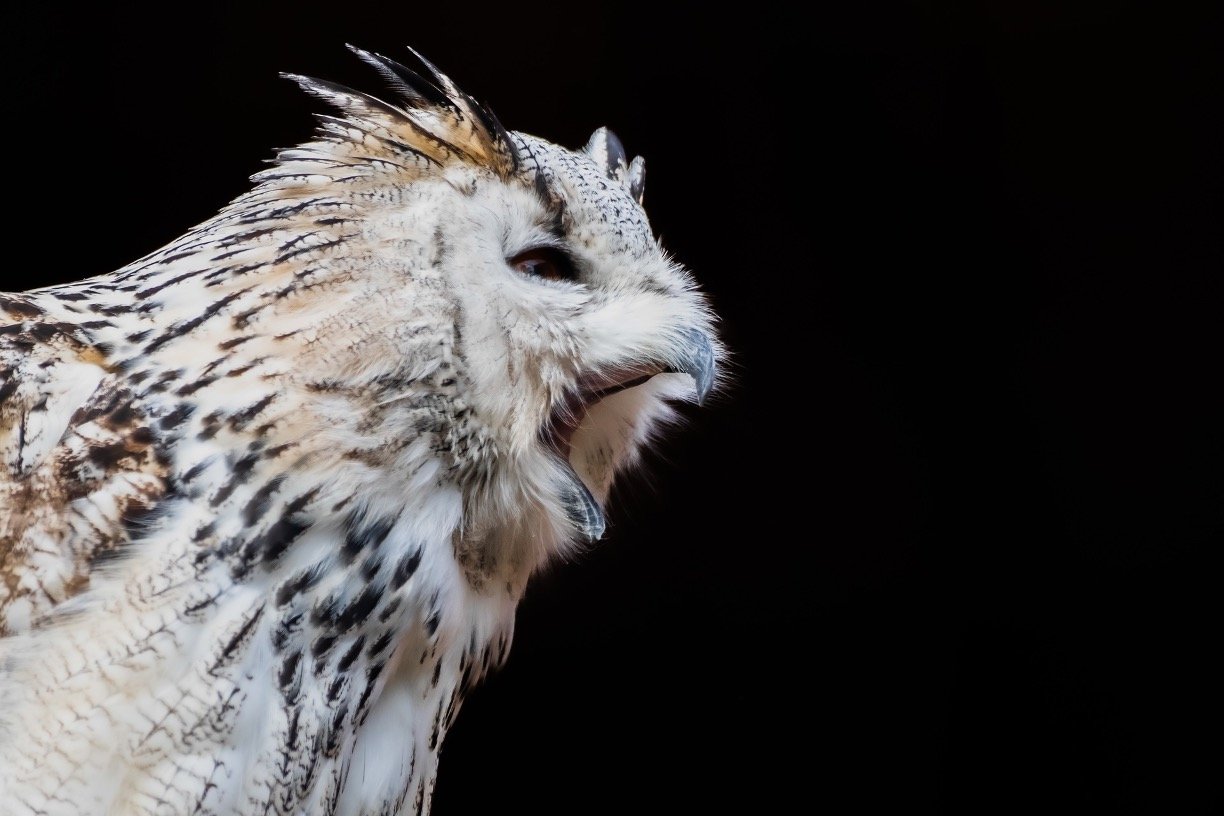
What Does An Owl Sound Like?
Owls are known for their distinct and varied vocalizations, which are necessary for survival and play an important role in their social behavior. Owls communicate with other owls, establish territory, attract mates, and warn off potential predators using a variety of calls.
Owls make a variety of sounds, including hoots, screeches, hisses, barks, and whistles. Each owl species has its own distinct call, which is often used to identify the species. Some owl calls are soft and gentle, while others are loud and piercing, and can be heard from several miles away.
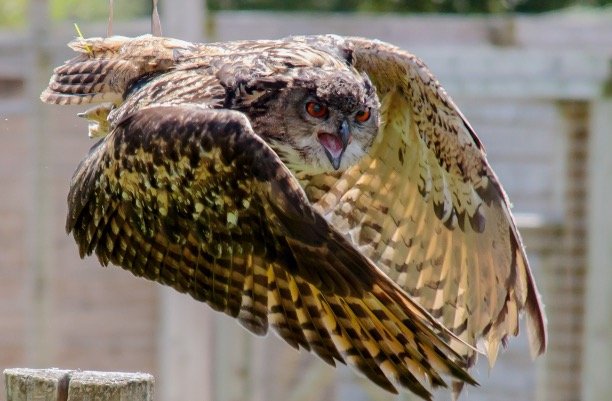
Owls make fascinating and often eerie sounds, making them a popular subject in literature, folklore, and popular culture.
Listening to the sounds of owls is a great way to connect with the natural world and appreciate the unique and diverse vocalizations of these incredible birds of prey, whether you are an avid birdwatcher or simply enjoy the beauty of nature.
Types of Owls Calls
There are many different types of owl calls, each with its own distinct sound and function. Here are some examples of common owl calls:
1. Hoots: Hooting is the most common owl call, and male owls use it to establish territory and attract mates. A well-known example of a hoot is the great horned owl’s classic “hoo hoo” call.
2. Screeches: Screeches are more aggressive owl calls that are frequently used as a warning or to defend territory. The barn owl is distinguished by its high-pitched screech, which can be quite loud and piercing.
3. Whistles: Some owls, such as the Eastern screech owl, produce a soft, musical whistle that is similar to a horse whinnying.
4. Hisses: Hissing is a common defense mechanism for many owl species. A raspy hiss, for example, is used by the barn owl to warn potential predators.
5. Trills: Trilling is a softer, more melodic owl call that is frequently used by pairs to communicate. For example, the Eastern screech owl has a distinct trill that sounds like a descending whistle.
6. Chirps: Chirps are a common owl call that young owls use to communicate with their parents. Some owl species, such as the boreal owl, use it as a territorial call.
7. Barks: Some species of owls, such as the Northern saw-whet owl, make a barking sound that is often used during courtship and territorial displays.
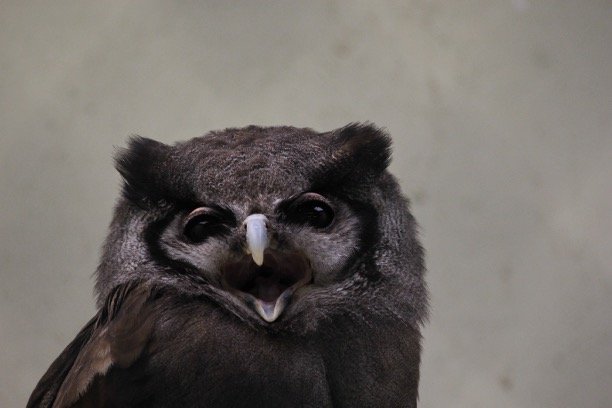
Why Owls Make Noises?
Owls make noises for a variety of reasons, which vary depending on the species and the call. Here are some of the most common reasons why owls make noise:
1. Communication: One of the primary reasons owls make noise is to communicate with other owls. They use a variety of calls to communicate with one another about territory, mating, and danger.
2. Defense: To ward off potential predators or threats, owls may make noise as a defense mechanism. This is especially true for species like the great horned owl, which makes loud, aggressive sounds.
3. Hunting: Some owls rely on vocalizations to aid in their hunting. The barn owl, for example, uses a series of hisses and clicks to locate prey in the dark.
4. Social bonding: Owls may also make noises in order to strengthen social bonds within their group or pair. A pair of owls, for example, may use soft hooting or trilling sounds to communicate and strengthen their bond.
Owls and Their Sounds
Owls are known for their distinct and varied calls, which vary greatly between species. Here are some examples of owls and their distinct vocalizations:
1. Great horned owl (Bubo virginianus pallescens)
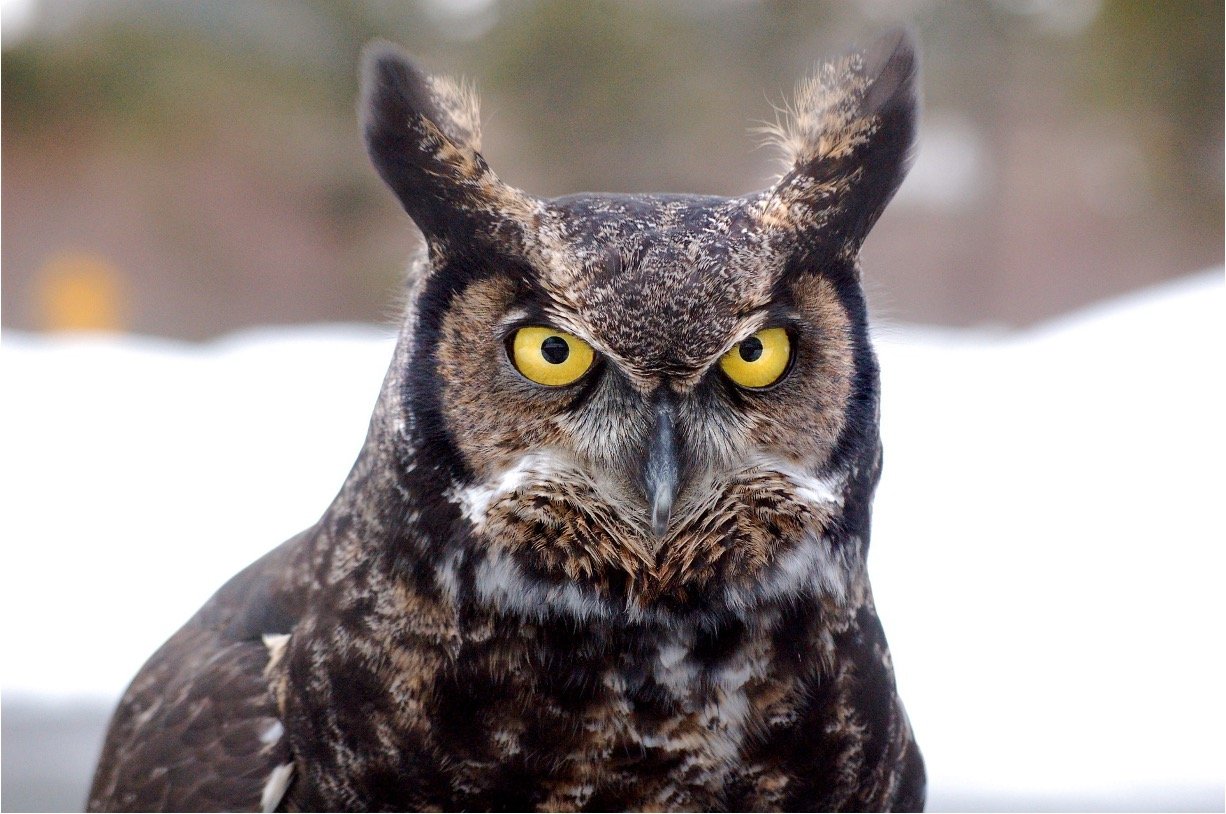
The great horned owl is distinguished by its deep, resonant hoot, which sounds like “hoo-hoo-hoo-hoo” with a pause in between. They also make other sounds, such as screeches and barks.
Listen Great Horned Owl Call
Citation: Scott Olmstead, XC767278. Accessible at www.xeno-canto.org/767278.
2. Barn owl (Tyto alba)
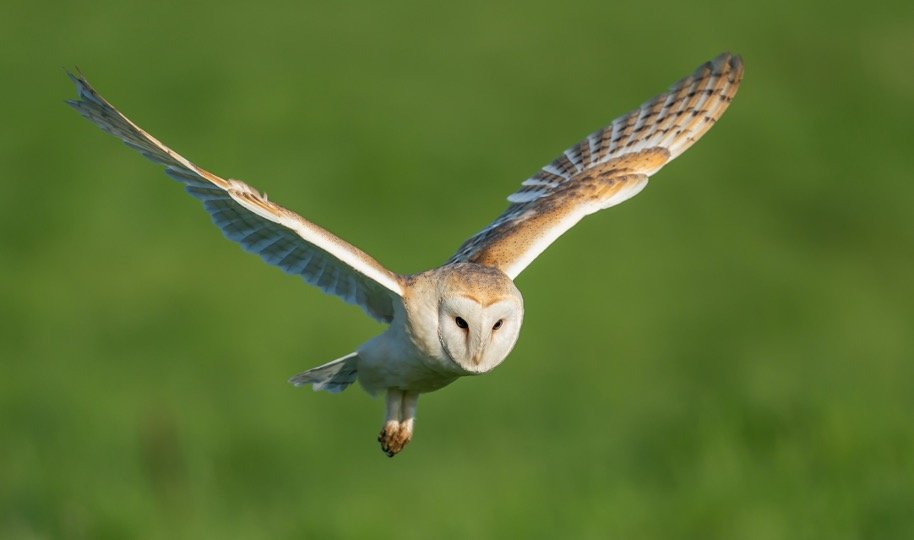
The most distinctive sound of a barn owl is a high-pitched screech that can be quite loud and piercing. When threatened, they also make a raspy hissing sound.
Listen Barn Owl Call
Citation: Dominique Guillerme, XC771408. Accessible at www.xeno-canto.org/771408.
3. Eastern screech owl (Megascops asio)

The Eastern screech owl has a soft, musical trill that sounds like a descending whistle. They also make a variety of other sounds, such as whinnies and barks.
Listen Eastern screech Owl Call
Citation: Bruce Lagerquist, XC712961. Accessible at www.xeno-canto.org/712961.
4. Barred owl (Strix varia)

The call of the barred owl is often described as “who cooks for you, who cooks for you all?” It’s a distinct hooting call, which can be quite loud and resonant.
Listen Barred Owl Call
Citation: Barry Edmonston, XC727743. Accessible at www.xeno-canto.org/727743.
5. Snowy owl (Bubo scandiacus)
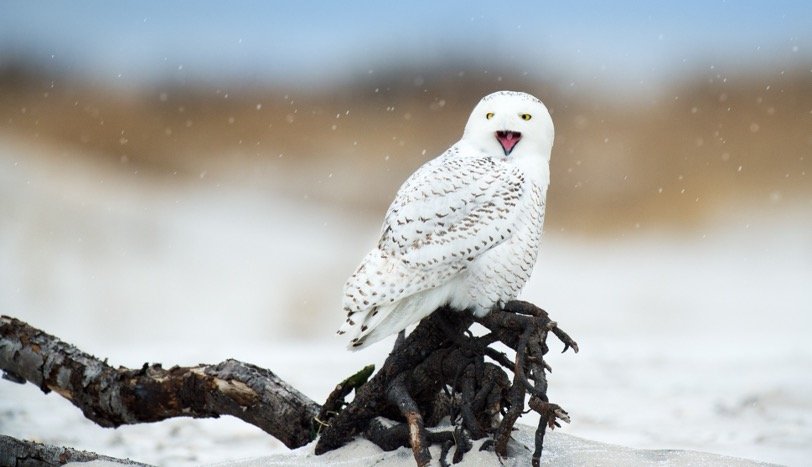
The snowy owl has several calls, including a soft, low hoot and a bark-like call used during courtship displays.
Listen Snowy Owl Call
Citation: Tero Linjama, XC343144. Accessible at www.xeno-canto.org/343144.
6. Northern saw-whet owl (Aegolius acadicus)

The Northern saw-whet owl has a distinct barking sound that it uses frequently during territorial displays. They also make a number of other calls, such as trills and hoots.
Listen Northern saw-whet Owl Call
Citation: Lance A. M. Benner, XC546885. Accessible at www.xeno-canto.org/546885.
7. Long-eared owl (Asio otus)
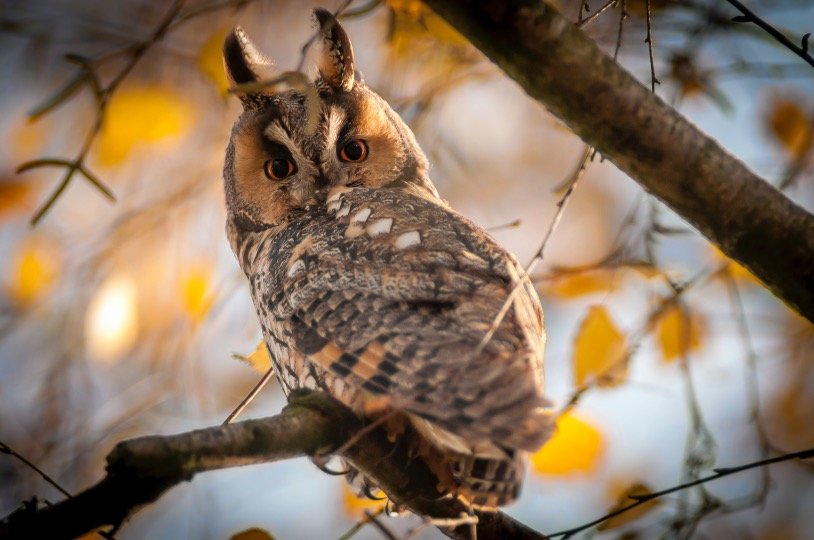
Long-eared owls have a distinct call that sounds like a series of low-pitched hoots followed by a series of higher-pitched hoots. They also make a variety of other sounds such as barks and whines.
Listen Long-eared Owl Call
Citation: Dmitriy, XC737216. Accessible at www.xeno-canto.org/737216.
8. Short-eared owl (Asio flammeus galapagoensis)
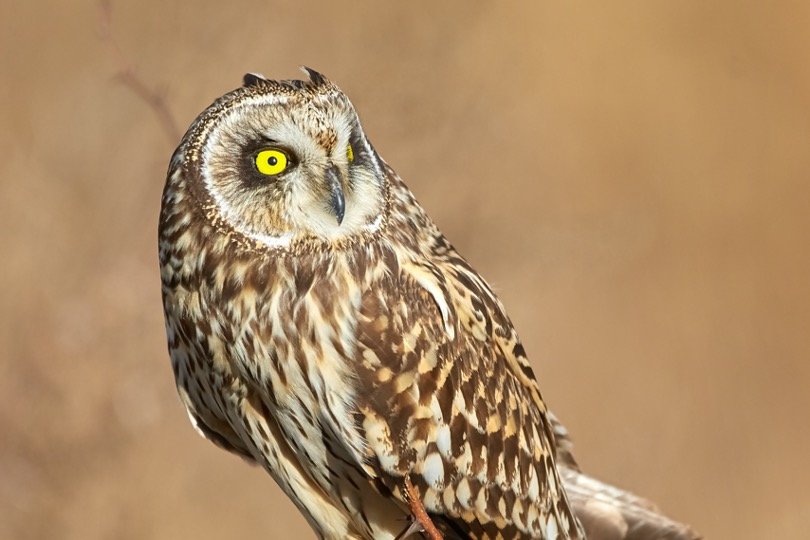
The short-eared owl has several calls, including a soft, low hoot and a harsh, barking call that is frequently used during territorial displays.
Listen Short-eared Owl Call
Citation: Jacob Guachisaca Salínas, XC741486. Accessible at www.xeno-canto.org/741486.
9. Burrowing owl (Athene cunicularia)
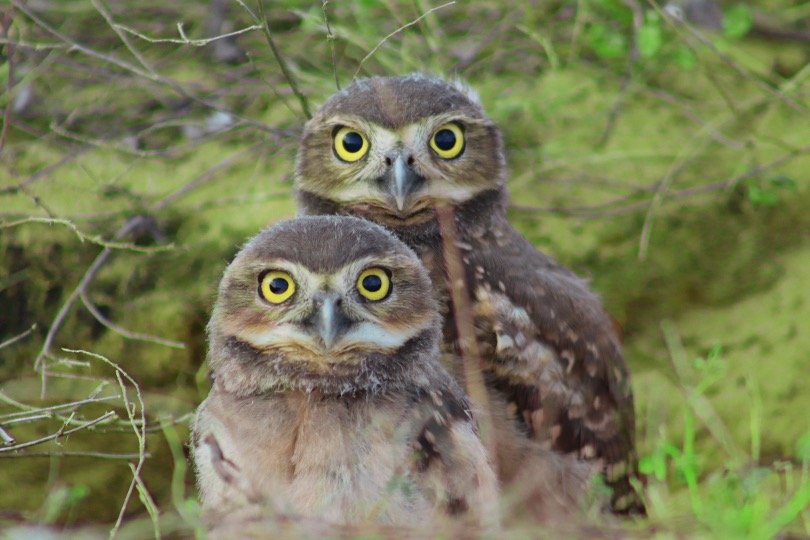
A burrowing owl’s calls include a soft, bubbling coo and a series of low hoots. They also make a variety of other sounds such as barks and hisses.
Listen Burrowing Owl Call
Citation: David Ricardo Rodríguez-Villamil, XC524491. Accessible at www.xeno-canto.org/524491.
10. Screech owl (Megascops asio)
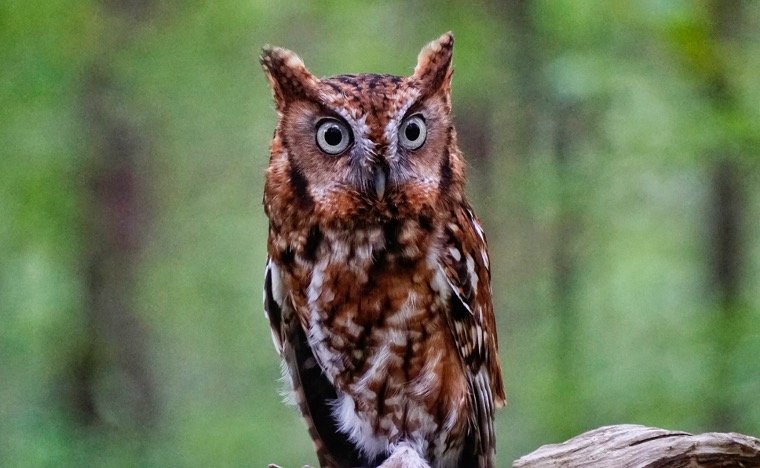
The screech owl has a unique call that sounds like a trill followed by a descending whinny. They also make a number of other calls, such as hoots and barks.
Listen Screech Owl Call
Citation: wisconagus, XC690617. Accessible at www.xeno-canto.org/690617.
11. Tawny owl (Strix aluco)
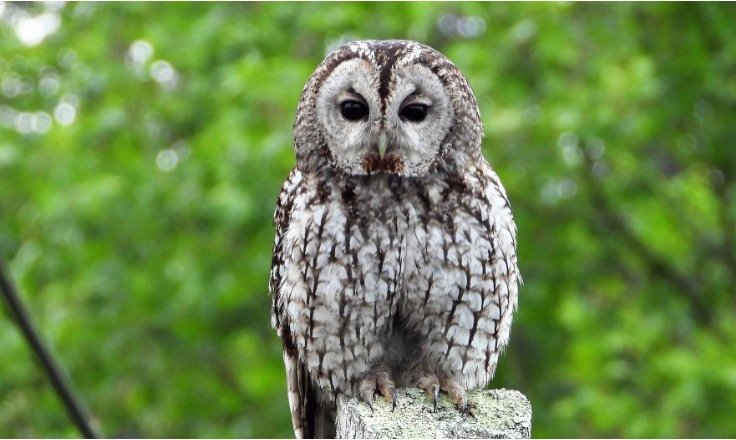
The tawny owl’s call is distinct, sounding like a series of hoots followed by a long trill. They also make various other sounds, such as hisses and screams.
Listen Tawny Owl Call
Citation: Rafał Szczerbik, XC742876. Accessible at www.xeno-canto.org/742876.
12. Eurasian eagle-owl (Bubo bubo)
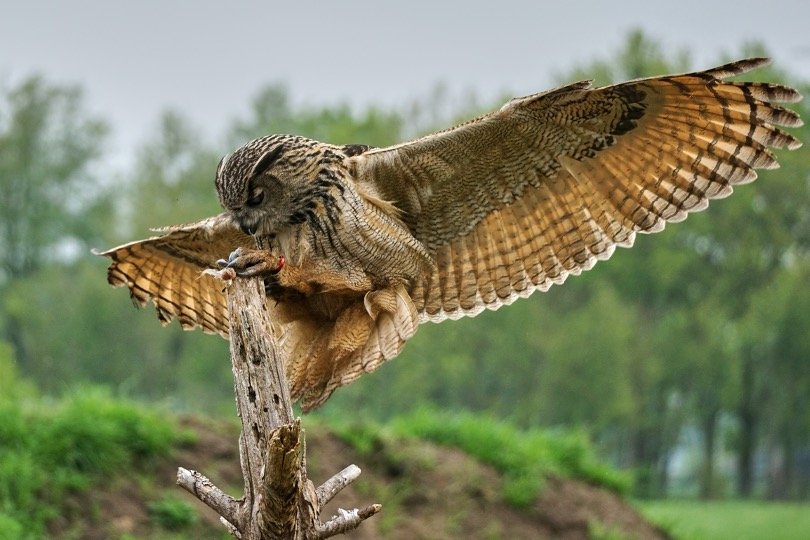
The Eurasian eagle-owl has a deep, booming call that can be heard from several miles away. It sounds like a long, drawn-out “huuuh-hu-hu-hu-hu-hu-hu-hu-hu-hu-hu-hu-hu
Listen Eurasian eagle Owl Call
Citation: Jarek Matusiak, XC745773. Accessible at www.xeno-canto.org/745773.
Are All Owls Nocturnal?
13. Northern pygmy-owl (Glaucidium californicum)
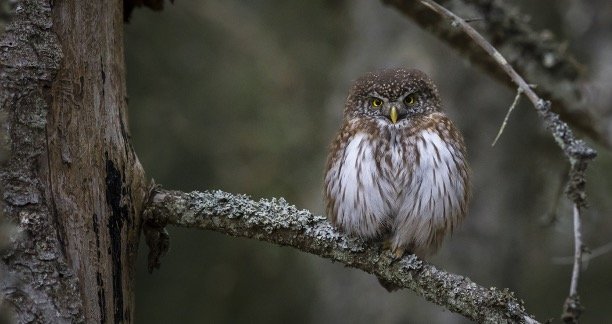
The Northern pygmy-owl has a high-pitched call that sounds like “toot-toot-toot,” which it uses to communicate with its mate and establish territory.
Listen Northern pygmy Owl Call
Citation: Lance A. M. Benner, XC527720. Accessible at www.xeno-canto.org/527720.
14. Spectacled owl (Pulsatrix perspicillata)

The spectacled owl has a unique call that sounds like a series of barks followed by a series of hoots.
Listen Spectacled Owl Call
Citation: Mauricio Cuellar Ramirez (@Birding.travel), XC592818. Accessible at www.xeno-canto.org/592818.
15. Elf owl (Micrathene whitneyi)
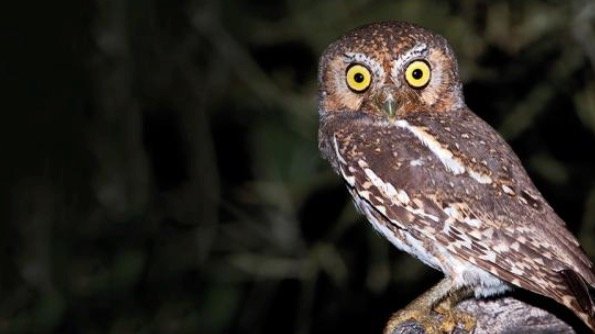
The elf owl has a whistling, high-pitched call that sounds like “poo-poo-poo.” They also make a variety of other sounds such as barks and hisses.
Listen Elf Owl Call
Citation: Tim Marquardt, XC180166. Accessible at www.xeno-canto.org/180166.
16. Boreal owl (Aegolius funereus)

The boreal owl has a gentle, soft call that sounds like a series of whistles. They also make chirps and hoots as well as other calls.
Listen Boreal Owl Call
Citation: Stein Ø. Nilsen, XC781829. Accessible at www.xeno-canto.org/781829.
17. Spotted owl (Strix occidentalis)
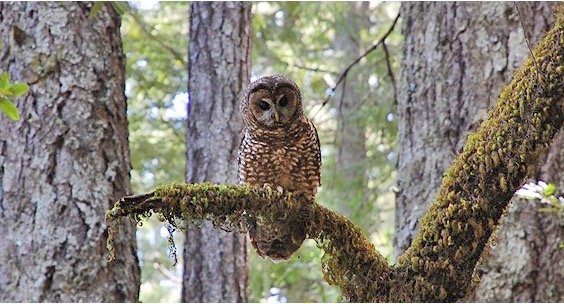
Spotted owls have a distinct call that sounds like a series of hoots followed by a trill. They also make a variety of other sounds such as barks and hisses.
Listen Spotted Owl Call
Citation: Geoffrey A. Keller.
18. Blakiston’s fish owl (Bubo blakistoni doerriesi)
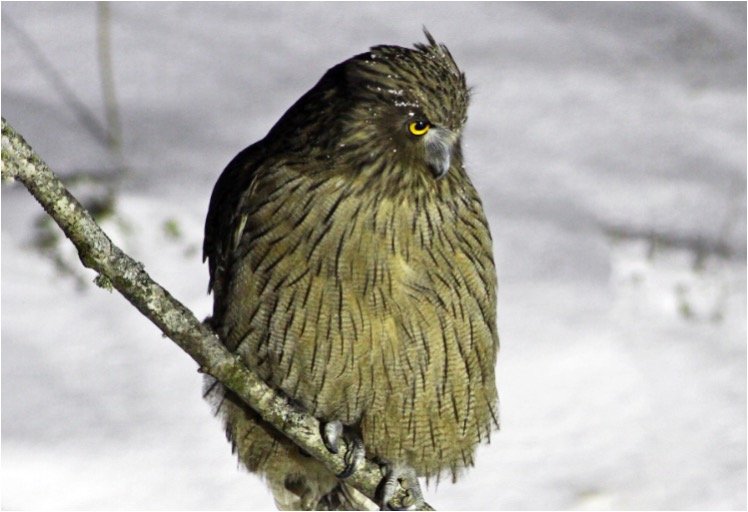
The deep, booming call of the Blakiston’s fish owl can be heard from several miles away. It sounds like a long, drawn-out “whoo-whoo-oo-oo-oo-oo-oo-oo-oo-oo-oo-oo-o
Listen Blakiston’s fish Owl Call
Citation: Sergey Surmach, XC692538. Accessible at www.xeno-canto.org/692538.
19. Ural owl (Strix uralensis)

The Ural owl’s call is distinct, sounding like a low, deep hoot followed by a series of high-pitched hoots.
Listen Ural Owl Call
Citation: Lars Edenius, XC661941. Accessible at www.xeno-canto.org/661941.
20. African wood owl (Strix woodfordii)

The African wood owl has a distinct call that consists of a series of low hoots followed by a descending trill.
Listen African Wood Owl Call
Citation:Peter Boesman, XC347067. Accessible at www.xeno-canto.org/347067.
21. Crested owl (Lophostrix cristata)
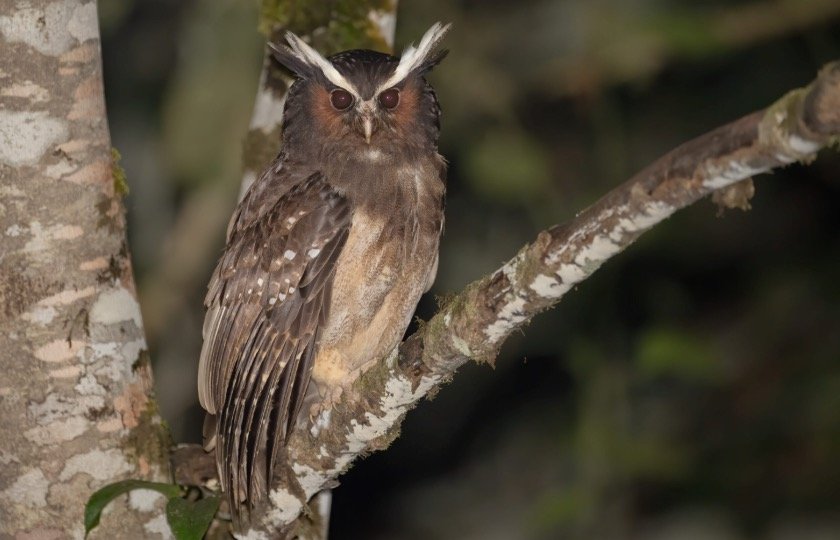
The crested owl’s call is distinct, sounding like a low-pitched hoot followed by a series of high-pitched whistles.
Listen Crested Owl Call
Citation: Peter Boesman, XC272098. Accessible at www.xeno-canto.org/272098.

